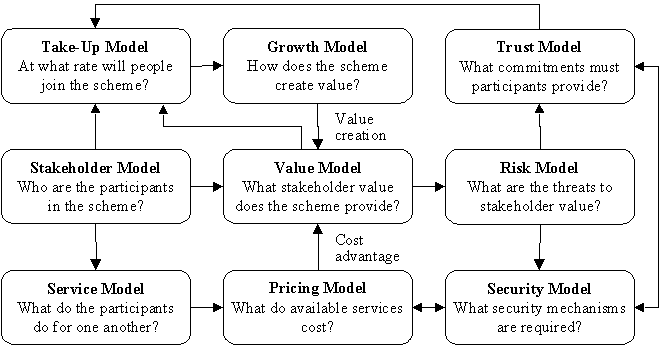
 |
developing a business caseveryard projects > planning > business case |
| we offer | business case development | examples | material | links |
| consultancy
management briefings independent advice on tools and methods |
A business case for a proposed or evolving scheme must
demonstrate the economic and social viability and robustness of the scheme
as a whole.
Where the scheme depends on collaboration and contribution from multiple stakeholders, the business case must establish a viable and attractive proposition for each stakeholder. We use a range of models to develop business cases, as part of our model-based management approach.
|
We have recently been involved in developing a business case for a collaborative smart card scheme. | Planning Complex Collaborations |
 |
Business case establishes attraction of schemeveryard projects > planning > business case > scheme attraction |
A complex scheme typically provides multiple sources of value. These sources of value interact with one another – either positively (which we call the "multiplication scenario") or negatively (which we call the "interference scenario").
Programme management is then focused on promoting the multiplication scenario and avoiding the interference scenario.
 |
Business case establishes viability of schemeveryard projects > planning > business case > scheme viability |
| The business case for a complex scheme typically depends on scheme dynamics, including the extent / impact of behaviour modification. For example, the viability of a smart card scheme may depend on the extent to which consumers modify their purchasing behaviour, as well as the extent to which service providers are prepared to modify their business processes. | |
| A scheme typically has a controlled ramp-up ovevr time. The distribution of stakeholder costs and benefits, as well as the risk profile, changes as the scheme expands. | |
| Successful operational management of the scheme will depend on careful monitoring of the scheme dynamics. Control of the scheme may involve adjustment to operational policies. |
 |
Business Case Modelsveryard projects > planning > business case > models |

The logic of the business case is developed through a series of interconnected models.
 |
veryard projects > planning > business case |
Copyright © 2003 Veryard Projects Ltd http://www.veryard.com/planning/businesscase.htm |